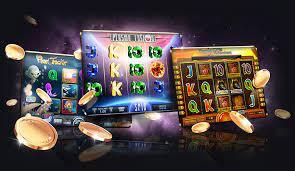It’s a weird feeling—knowing something’s not right but having no clue how to fix it. Maybe things were okay at first. A few pills here and there to take the edge off. Maybe to sleep, to stay calm, to not feel everything all at once. But slowly, what once helped starts hurting more than it helps. And no matter what’s tried—cutting back, taking breaks, pretending it’s not that bad—nothing seems to work anymore.
This is the point where rehab can feel like the last option. And that’s not a bad thing. Because when nothing else works, real help matters more than ever.
When Everything Else Starts Failing
Trying to stop on your own can feel impossible. Even when the pills or drugs stop working the way they used to, the thought of quitting completely can be terrifying. What if the anxiety gets worse? What if sleep becomes impossible? What if everything falls apart?
That fear is what keeps people stuck. Sometimes for months. Sometimes for years.
It’s not because someone isn’t strong enough. It’s because addiction rewires the brain to think survival depends on that substance. It’s sneaky like that. It doesn’t show up all at once—it builds up slowly. One excuse here, one skipped meal there, one moment of thinking, “I’ll just use this once.” Until eventually, it becomes the only thing that feels like it works.
Friends might not understand. Family might try to help but just say the wrong things. And even if everyone means well, no one can really do much from the outside. That’s when a treatment program becomes more than just an idea—it becomes a lifeline.
According to Legacy Healing Center, getting help through professional rehab gives people the structure and support they need to finally move forward, especially with addictions that are both physical and mental, like benzodiazepines. Trying to handle something that complicated alone just doesn’t work for most people—and that’s not a weakness. It’s just reality.
Why Willpower Alone Isn’t Enough
People say things like “just stop” or “you can quit if you really want to.” But addiction doesn’t work that way. It changes the brain. It messes with decision-making, emotions, and even basic things like hunger and sleep. By the time someone realizes they have a problem, their body and mind are already convinced they need the substance to function.
It’s not about lacking discipline or motivation. It’s about biology and chemistry. And that’s exactly why willpower isn’t the answer—it can’t undo changes in the brain. That doesn’t mean recovery is impossible. It just means it has to be treated like the medical issue it is, not a personal flaw.
Rehab programs understand this better than anyone. They’re not about guilt or shame. They’re about rebuilding. That means learning how addiction works, finding out what made things go off track, and figuring out how to move forward in a way that actually works long-term.
What Makes Rehab Different
So, what actually happens in rehab? It’s not just one big therapy session. It’s a full reset for the mind, body, and daily routine. A real chance to stop spinning in circles and actually heal.
For benzos, opioids, or alcohol—anything that affects brain function—there’s usually a detox step first. That means clearing the substance from the body in a safe and supervised way. It can be rough, but medical support makes it safer and more manageable than going cold turkey alone.
After detox, therapy becomes the main focus. Individual sessions dig into personal triggers and patterns. Group sessions offer connection and support. And some rehab centers include holistic options too—like art therapy, fitness programs, meditation, and nutrition coaching—because addiction affects more than just one part of life.
For people dealing with both mental health struggles and substance use, dual diagnosis treatment is a big deal. It means both issues get attention at the same time, which lowers the chance of relapse and helps people feel more balanced during recovery.
Another thing that makes rehab different is how it rebuilds life from the ground up. That includes learning healthy coping skills, improving communication, setting boundaries, and even basic routines like getting good sleep and managing stress. None of it’s flashy—but it works. And for a lot of people, it’s the first time they’ve had space to slow down and really focus on healing.
When You’ve Tried Everything Else
Most people don’t just wake up one day and head to rehab. They try a bunch of things first—cutting back, quitting for a while, switching substances, hiding it, blaming stress. It might work for a week, or a month. But eventually, the same patterns return.
That cycle gets exhausting. It’s full of guilt and frustration and more broken promises than anyone wants to count. But here’s the truth: that cycle isn’t proof that someone’s too far gone. It’s proof that trying to do it alone isn’t working.
That’s where rehab comes in. It’s not the last resort. It’s the reset button that finally sticks.
What Life Looks Like After
Getting clean is one thing. Staying clean is a whole other process. That’s where aftercare becomes important. Recovery doesn’t end when someone leaves rehab—it keeps going, and the support should too.
A good rehab program doesn’t just send people home and say “good luck.” There’s a plan. That might include outpatient therapy, regular check-ins, group meetings, and sometimes sober living environments where it’s easier to stay focused.
The goal isn’t just avoiding relapse. It’s building a life where substances aren’t needed anymore. That might mean finding a new job, going back to school, starting over in a different city, or repairing relationships that got strained along the way.
It’s not perfect. There are hard days. But the point is, recovery is possible—and it’s worth it. Rehab gives people the tools to make those changes and actually stick with them.
What to Remember
Addiction doesn’t mean someone is broken or bad. It means they’re human. It means something inside is hurting and needs help—not judgment. Rehab isn’t a punishment. It’s not where people go because they failed—it’s where they go to start again, with actual support and structure that works. Willpower isn’t the magic fix. And that’s not a flaw. It’s just the truth.
Healing happens when people feel safe enough to be honest, supported enough to try again, and strong enough to take the next step. And when everything else has stopped working, that’s when rehab matters the most. That’s when it can finally help.


